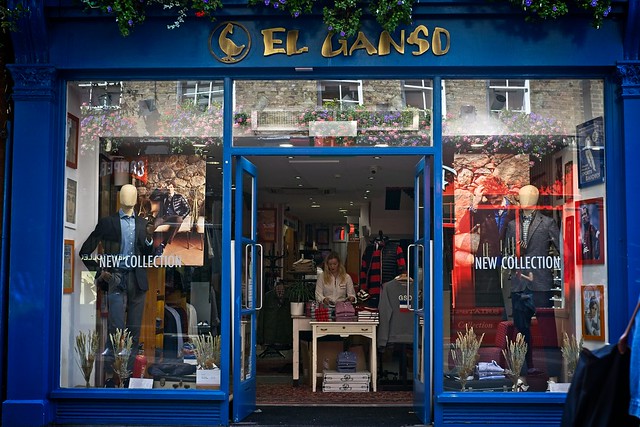Unlock the Magic in Your Story Now
Get the Free 20 questions to Ask Before Launching Your Idea workbook when you sign up for occasional updates.
Get the Free 20 questions to Ask Before Launching Your Idea workbook when you sign up for occasional updates.
Articles filed in: Strategy
A Word About Value
filed in Marketing, Storytelling, Strategy

How much is an avocado worth?
The answer is, it depends.
It depends on the season, the stock levels, how much the customer wants it and the context in which they are buying or consuming it. Buy an avocado from the market, and it might be as little as $2.50. Mash it up, serve it with egg on sourdough toast, and it can be worth ten times that amount to some people.
And that’s the point. Value is contextual and in the eye of the beholder.
If we’re going to get better at creating and communicating our value, we need to know who our beholder is and what she cares about.
Image by Clem Onojeghuo
Marketing Advice
filed in Marketing, Storytelling, Strategy

We’re on our way to buy that forgotten pint of milk late one weekday evening when we spot a brand new restaurant. So, we stop to take a look at the menu in the window.
Inside the place is deserted, apart from two smiling waitresses, stationed behind the double glass doors and one anxious owner polishing unused glasses behind the bar. Before we know it, Sam, the owner, is standing outside the door next to my husband and me, asking us if we’ve had dinner yet.
We can see the fear in his eyes. He looks like an expectant father pacing the floor of the delivery room. It’s been two weeks since they opened and apart from weekends, the place is deserted most nights. Sam tells us how proud he is of the food and how hard they’ve all been working on getting the restaurant open. But we can see that his optimism is waning. He’s beginning to think this might not work. He was convinced if he built it, people would come. But now he’s not so sure, and he doesn’t know what to do next.
What would you do if you were Sam?
What’s the best marketing advice you can give him?
How are you following this advice in your own business?
Image by Garry Knight
Words And Deeds
filed in Marketing, Storytelling, Strategy

When we moved to our neighbourhood, the independent organic grocer was a community hub. The sales staff knew locals by name. The fruit and vegetables were plentiful and fresh. And customers were offered food tastings every day.
And then bit by bit things started to change. The owner opened a store in a neighbouring suburb, and it was clear that his focus shifted. The first thing to go were the food tastings. The vegetables didn’t get restocked as often, and the cafe closed early. One-by-one, the regular staff began to leave. Customers no longer experienced the joy of shopping there, and so they left too.
The store was in the same building, using the same suppliers.
The name over the door hadn’t changed, but the story had.
Our story isn’t just what we tell people. Our story is everything we do.
Image by Garry Knight
If You Want To Be Noticed, Start Noticing

We’re always looking for ways to get our customers to notice us.
We spend time thinking about what new marketing channels we could explore.
We work on strategies to get us more exposure.
We test tactics that might improve our reach.
What would happen if we shifted some of our energy to noticing our customers?
How would that change the strategy we formulate, the tactics we use and the impact we make?
Image by Garry Knight
A Word About Product Market Fit
filed in Storytelling, Strategy

Value creation is the backbone of a viable business. Value is created when the right people, launch the right product, using the right business model, at the right time, for the right people. We call this product-market fit. We have the best chance of succeeding in the marketplace when all of these factors are aligned. Each one plays an equally important part in the viability of a business.
It’s no good making an incredible product that nobody wants to buy. But it’s equally important to discern who you can deliver value to and serve best. Just because someone has the money to pay for your product doesn’t mean they are your right customer.
Thriving businesses are the result of product-market fit. Happy founders and fulfilled teams are the result client-business fit. Successful businesses do great work for good customers. The pickier you are about the work you do and the clients you serve the better.
Image by Garry Knight
What Stories Are You Forgetting To Tell?
filed in Storytelling, Strategy

Often our best stories are the ones that seem insignificant to us. We take the things we do well for granted. We forget that what’s simple to us might be insightful for others. We become accustomed to doing the work without celebrating or showing the results. And that’s a problem.
If we don’t articulate and share our strengths, how will our right people know?
If we don’t show people how we can help them, how will they know to ask for our help?
If we don’t communicate our value, how will our work become valued?
And if we don’t practice understanding our strengths, how will we build on them?
Where can you start?
Tell us a story about the work you’re most proud of.
Tell us a story about the results you helped a client achieve.
Tells us a story about something you did well and what you learned from it.
Your stories are more powerful than you think.
Image by Kevin Grieve
Always, Sometimes, Never

Doing our best work requires us to pay attention to the things and people that energise us.
One way to do this is to consider categorising potential opportunities, projects or clients into three buckets. Always, sometimes and never.
The goal is to do more of the ‘always’ work, on the projects that both energise us and serve our mission. The ‘sometimes’ work may be taking us closer to our goals even if it isn’t in our zone of genius. And the ‘never’ work is that work that sucks our time and energy—the projects or tasks we should either avoid or delegate if they are essential.
It’s true that how we spend our days is how we end up spending our lives. We can deliberately choose to spend them wisely.
Image by Clark Young
The Power Of A Shared Narrative
filed in Storytelling, Strategy

Many shoppers wandering the department store on Saturday are browsing. Some are buying. Most people the menswear assistant offers to help, decline. But one or two ask if a particular shirt or jumper is available in their size. The response depends. It depends on three things—the stock levels, the training the sales team received, and how the individual assistant shows up to work.
Often the assistant on duty will apologise, announcing that stock levels are low. Sometimes she will offer to check if another store has the item in the customer’s size. Rarely will she ask the customer when for and why he needs the shirt so that she can suggest an alternative or order one in his size.
It depends isn’t a recipe for great customer service. The best brands know the customer experience shouldn’t depend on who happens to be working that day. They intentionally design experiences and create scripts that match the outcome they want. And they hire people who share the company’s values and ideals—people who are intent on embodying the brand’s story.
Consistent service is a result of common goals and a shared narrative.
A good strategy depends on a great story.
Image by Garry Knight
What Can You Learn From Your Competitors?

Karl’s been a successful financial advisor for many years. He’s at the point where he doesn’t need to advertise his services. Karl chooses the clients he wants to work with and generally only takes on new clients by referral. He’s intentionally built the kind of business he wants.
Karl will tell you that the secret of his success is down to one thing—learning from his competitors.
“I spent a lot of time paying attention to my competitors. But instead of worrying about what they excelled at, I wanted to know where they fell short. I found out what they wouldn’t do for their clients. And then I did the things they weren’t prepared to do for mine. Now, sometimes those things didn’t scale. They weren’t systems and processes I could easily automate. To an outsider that might have looked like a short-term disadvantage, but over time things that weren’t easy to replicate turned into my competitive advantage.”
It turns out that differentiation happens in the heads, but mostly in the hearts, of your customers.
What’s the story your competitor doesn’t want to tell?
Image by Abdullah Öğük
